
Contour Buddy
™
for FD1 Series, FD75, and FD70
FlexDraper
®
Headers
Setup, Operation, and Parts Manual
215502 Revision A
Original Instruction
Featuring MacDon FLEX-FLOAT Technology™
The Harvesting Specialists.

Contour Buddy
™
for FD1 Series, FD75, and FD70 FlexDraper
®
Headers.
Published: October 2020
© 2020 MacDon Industries, Ltd.
The information in this publication is based on the information available and in effect at the time of printing. MacDon
Industries, Ltd. makes no representation or warranty of any kind, whether expressed or implied, with respect to the
information in this publication. MacDon Industries, Ltd. reserves the right to make changes at any time without notice.

Introduction
This manual contains safety information, setup instructions, operating and maintenance procedures, and parts information
for the Contour Buddy
™
kit.
The Contour Buddy
™
kit contains inboard and outboard wheel assemblies that mount to the underside of a FlexDraper
®
header and allow the header to operate in flex mode while cutting above the ground. The Contour Buddy
™
kit is designed
for use with MacDon FD1 Series, FD75, and FD70 FlexDraper
®
Headers.
When setting up the machine or making adjustments, review and follow the recommended machine settings in all relevant
original equipment manufacturer (OEM) publications. Failure to do so may compromise safety, machine function, and
machine life.
Conventions
The following conventions are used in this document:
• Right and left are determined from the operator’s position. The front of the header faces the crop.
• Unless otherwise noted, use the standard torque values provided in this manual.
Installation Time
This kit takes approximately 3 hours to install.
NOTE:
Header float and wing balance must be reset after the kit is installed, and anytime the wheels are removed while cutting
low crop.
NOTE:
This document is currently available in English only.
215502 i Revision A

Summary of Changes
Section Summary of Change
Internal Use
Only
Introduction, page i Updated image
ECN 60646
2.1 Unloading Contour Buddy
™
,
page 9
Updated images
ECN 60646
2.2.2 Installing Outboard Wheel
Assemblies and Jacks, page 14
Updated images
ECN 60646
3.3.3 Moving Left Outboard Wheel
to Transport Position, page 32
Added topic
ECN 60646
3.3.4 Moving Left Outboard Wheel
to Working Position, page 33
Added topic
ECN 60646
3.3.5 Removing Contour Buddy
™
Wheel Assemblies, page 34
Updated images
ECN 60646
5.2 Contour Buddy
™
– Jacks and
Wheel Assemblies (Left Side),
page 40
Updated parts
ECN 60646
5.3 Contour Buddy
™
– Jacks and
Wheel Assemblies (Right Side and
Middle), page 44
Updated parts
ECN 60646
215502 ii Revision A

215502 iii Revision A
Introduction ................................................................................................................................................i
Summary of Changes....................................................................................................................................ii
Chapter 1: Safety ......................... ................................................................ ............................................... 1
1.1 Safety Alert Symbols ...............................................................................................................................1
1.2 Signal Words ......................................................................................................................................... 2
1.3 General Safety ....................................................................................................................................... 3
1.4 Maintenance Safety ................................................................................................................................5
1.5 Hydraulic Safety ..................................................................................................................................... 6
1.6 Safety Signs ........................................................................................................................................... 7
1.6.1 Installing Safety Decals.................................................................................................................... 7
Chapter 2: Assembly/Setup Instructions............................................. ...................................................... 9
2.1 Unloading Contour Buddy
™
......................................................................................................................9
2.2 Installing Contour Buddy
™
...................................................................................................................... 11
2.2.1 Installing Inboard Wheel Assemblies ............................................................................................... 11
2.2.2 Installing Outboard Wheel Assemblies and Jacks ............................................................................... 14
2.2.3 Installing Transport Light Extension Bracket – FD75 and FD1 Series FlexDraper
®
Headers..........................18
2.2.4 Installing Transport Light Extension Bracket – FD70 FlexDraper
®
Headers............................................... 20
2.3 Preparing Contour Buddy
™
for Use .......................................................................................................... 25
Chapter 3: Operation................................................................. ............................................................... 27
3.1 Owner/Operator Responsibilities ............................................................................................................ 27
3.2 Operational Safety................................................................................................................................ 28
3.3 Adjusting Wheel Height ......................................................................................................................... 29
3.3.1 Adjusting Inboard Wheel Height ..................................................................................................... 29
3.3.2 Adjusting Outboard Wheel Height................................................................................................... 31
3.3.3 Moving Left Outboard Wheel to Transport Position ........................................................................... 32
3.3.4 Moving Left Outboard Wheel to Working Position ............................................................................. 33
3.3.5 Removing Contour Buddy
™
Wheel Assemblies................................................................................... 34
Chapter 4: Maintenance................................................................... ........................................................ 37
4.1 Lubricating Wheel Axles......................................................................................................................... 37
Chapter 5: Repair Parts .................................................................... ........................................................ 39
5.1 Abbreviations ...................................................................................................................................... 39
5.1.1 Serial Number Breaks ................................................................................................................... 39
5.2 Contour Buddy
™
– Jacks and Wheel Assemblies (Left Side)........................................................................... 40
5.3 Contour Buddy
™
– Jacks and Wheel Assemblies (Right Side and Middle)......................................................... 44
5.4 Contour Buddy
™
– Decals ....................................................................................................................... 48
Chapter 6: Reference............................................................................................................ .................... 51
6.1 Torque Specifications ............................................................................................................................ 51
TABLE OF CONTENTS

215502 iv Revision A
6.1.1 SAE Bolt Torque Specifications ....................................................................................................... 51
6.1.2 Metric Bolt Specifications .............................................................................................................. 53
6.1.3 Metric Bolt Specifications Bolting into Cast Aluminum ........................................................................ 55
6.1.4 O-Ring Boss Hydraulic Fittings – Adjustable ...................................................................................... 56
6.1.5 O-Ring Boss Hydraulic Fittings – Non-Adjustable................................................................................ 58
6.1.6 O-Ring Face Seal Hydraulic Fittings.................................................................................................. 59
6.1.7 Tapered Pipe Thread Fittings.......................................................................................................... 60
6.2 Conversion Chart.................................................................................................................................. 62
Index............................................. .................................................................................................... ......... 63
Predelivery Checklist ................................................................. ............................................................... 65
TABLE OF CONTENTS

215502 1 Revision A
Chapter 1: Safety
1.1 Safety Alert Symbols
The safety alert symbol indicates important safety messages in this manual and on safety signs on the machine.
Figure 1.1: Safety Symbol
This symbol means:
• ATTENTION!
• BECOME ALERT!
• YOUR SAFETY IS INVOLVED!
Carefully read and follow the safety message accompanying this
symbol.
Why is safety important to you?
• Accidents disable and kill
• Accidents cost
• Accidents can be avoided

215502 2 Revision A
1.2 Signal Words
Three signal words, DANGER, WARNING, and CAUTION, are used to alert you to hazardous situations. Two signal words,
IMPORTANT and NOTE, identify non-safety related information.
Signal words are selected using the following guidelines:
DANGER
Indicates an imminently hazardous situation that, if not avoided, will result in death or serious injury.
WARNING
Indicates a potentially hazardous situation that, if not avoided, could result in death or serious injury. It may also be
used to alert against unsafe practices.
CAUTION
Indicates a potentially hazardous situation that, if not avoided, may result in minor or moderate injury. It may be used
to alert against unsafe practices.
IMPORTANT:
Indicates a situation that, if not avoided, could result in a malfunction or damage to the machine.
NOTE:
Provides additional information or advice.
SAFETY

215502 3 Revision A
1.3 General Safety
Protect yourself when assembling, operating, and servicing machinery.
Figure 1.2: Safety Equipment
CAUTION
The following general farm safety precautions should be part of
your operating procedure for all types of machinery.
Wear all protective clothing and personal safety devices that
could be necessary for the job at hand. Do NOT take chances.
You may need the following:
• Hard hat
• Protective footwear with slip-resistant soles
• Protective glasses or goggles
• Heavy gloves
• Wet weather gear
• Respirator or filter mask
Figure 1.3: Safety Equipment
In addition, take the following precautions:
• Be aware that exposure to loud noises can cause hearing
impairment or loss. Wear suitable hearing protection devices
such as earmuffs or earplugs to help protect against loud
noises.
Figure 1.4: Safety Equipment
• Provide a first aid kit in case of emergencies.
• Keep a properly maintained fire extinguisher on the machine.
Be familiar with its proper use.
• Keep young children away from machinery at all times.
• Be aware that accidents often happen when the Operator is
tired or in a hurry. Take time to consider the safest way.
NEVER ignore warning signs of fatigue.
SAFETY

215502 4 Revision A
Figure 1.5: Safety around Equipment
• Wear close-fitting clothing and cover long hair. NEVER wear
dangling items such as scarves or bracelets.
• Keep all shields in place. NEVER alter or remove safety
equipment. Make sure driveline guards can rotate
independently of shaft and can telescope freely.
• Use only service and repair parts made or approved by
equipment manufacturer. Substituted parts may not meet
strength, design, or safety requirements.
Figure 1.6: Safety around Equipment
• Keep hands, feet, clothing, and hair away from moving parts.
NEVER attempt to clear obstructions or objects from a
machine while the engine is running.
• Do NOT modify the machine. Unauthorized modifications
may impair machine function and/or safety. It may also
shorten the machine’s life.
• To avoid injury or death from unexpected startup of the
machine, ALWAYS stop the engine and remove the key from
the ignition before leaving the operator’s seat for any reason.
Figure 1.7: Safety around Equipment
• Keep service area clean and dry. Wet and/or oily floors are
slippery. Wet spots can be dangerous when working with
electrical equipment. Be sure all electrical outlets and tools
are properly grounded.
• Keep work area well lit.
• Keep machinery clean. Straw and chaff on a hot engine are
fire hazards. Do NOT allow oil or grease to accumulate on
service platforms, ladders, or controls. Clean machines before
storage.
• NEVER use gasoline, naphtha, or any volatile material for
cleaning purposes. These materials may be toxic and/or
flammable.
• When storing machinery, cover sharp or extending
components to prevent injury from accidental contact.
SAFETY

215502 5 Revision A
1.4 Maintenance Safety
Figure 1.8: Safety around Equipment
To ensure your safety while maintaining machine:
• Review the operator’s manual and all safety items before
operation and/or maintenance of the machine.
• Place all controls in Neutral, stop the engine, set the park
brake, remove the ignition key, and wait for all moving parts
to stop before servicing, adjusting, and/or repairing.
• Follow good shop practices:
– Keep service areas clean and dry
– Be sure electrical outlets and tools are properly grounded
– Keep work area well lit
Figure 1.9: Equipment NOT Safe for Children
• Relieve pressure from hydraulic circuits before servicing and/
or disconnecting the machine.
• Make sure all components are tight and that steel lines,
hoses, and couplings are in good condition before applying
pressure to hydraulic systems.
• Keep hands, feet, clothing, and hair away from all moving
and/or rotating parts.
• Clear the area of bystanders, especially children, when
carrying out any maintenance, repairs, or adjustments.
• Install transport lock or place safety stands under the frame
before working under the machine.
• If more than one person is servicing the machine at the same
time, be aware that rotating a driveline or other
mechanically-driven component by hand (for example,
accessing a lubricant fitting) will cause drive components in other areas (belts, pulleys, and knives) to move. Stay clear
of driven components at all times.
Figure 1.10: Safety Equipment
• Wear protective gear when working on the machine.
• Wear heavy gloves when working on knife components.
SAFETY

215502 6 Revision A
1.5 Hydraulic Safety
Figure 1.11: Testing for Hydraulic Leaks
• Always place all hydraulic controls in Neutral before leaving
the operator’s seat.
• Make sure that all components in the hydraulic system are
kept clean and in good condition.
• Replace any worn, cut, abraded, flattened, or crimped hoses
and steel lines.
• Do NOT attempt any makeshift repairs to hydraulic lines,
fittings, or hoses by using tapes, clamps, cements, or welding.
The hydraulic system operates under extremely high-
pressure. Makeshift repairs will fail suddenly and create
hazardous and unsafe conditions.
Figure 1.12: Hydraulic Pressure Hazard
• Wear proper hand and eye protection when searching for
high-pressure hydraulic leaks. Use a piece of cardboard as a
backstop instead of hands to isolate and identify a leak.
• If injured by a concentrated high-pressure stream of
hydraulic fluid, seek medical attention immediately. Serious
infection or toxic reaction can develop from hydraulic fluid
piercing the skin.
Figure 1.13: Safety around Equipment
• Make sure all components are tight and steel lines, hoses,
and couplings are in good condition before applying pressure
to a hydraulic system.
SAFETY

215502 7 Revision A
1.6 Safety Signs
Safety signs (decals) are usually yellow, and are placed on the machine where there is a risk of personal injury, or where the
operator has to take extra precaution before operating controls. Operator manuals and technical manuals identify the
location and meaning of all safety signs placed on the machine.
Figure 1.14: Operator’s Manual Decal
• Keep safety signs clean and legible at all times.
• Replace safety signs that are missing or illegible.
• If the original part on which a safety sign was installed is
replaced, be sure the repair part displays the current
safety sign.
• Replacement safety signs are available from Dealer Parts
Department.
1.6.1 Installing Safety Decals
1. Decide exactly where you are going to place the decal.
2. Clean and dry the installation area.
3. Remove the smaller portion of the split backing paper.
4. Place the decal in position and slowly peel back the remaining paper, smoothing the decal as it is applied.
5. Prick small air pockets with a pin and smooth out.
SAFETY


215502 9 Revision A
Chapter 2: Assembly/Setup Instructions
2.1 Unloading Contour Buddy
™
To unload the Contour Buddy
™
, follow these steps:
WARNING
To avoid injury to bystanders from being struck by machinery, do NOT allow people to stand in unloading area.
WARNING
Equipment used for loading and unloading must meet or exceed the minimum specified requirements. Using
inadequate equipment may result in vehicle tipping, machine damage, or chain breakage.
$
%
&
Figure 2.1: Minimum Lifting Capacity
A - Load Center of Gravity
B - Load Center 1220 mm (48 in.) from Back of Forks
C - Minimum Fork Length 1981 mm (78 in.)
Table 2.1 Lifting Vehicle
Minimum Capacity
908 kg (2000 lb.)
Minimum Fork Length
198 cm (78 in.)
IMPORTANT:
Forklifts are normally rated for a load located 610 mm (24 in.)
ahead of the back end of the forks. To obtain the forklift capacity
at 1220 mm (48 in.), check with your forklift distributor.
$
Figure 2.2: Pallet
1. Remove hauler’s tie-down straps and chains.
WARNING
Be sure forks are secure before moving away from load. Stand
clear when lifting.
2. Use forklift to lift pallet (A) off of the trailer deck.
3. Back up until the unit clears trailer, and slowly lower to
150 mm (6 in.) from the ground.
4. Take to storage or setup area.
5. Set pallet down on secure, level ground.

215502 10 Revision A
$
$
%
%
&
&
'
'
(
$
$
Figure 2.3: Contour Buddy
™
Shipping Configuration –
View from Above
6. Remove shipping banding and check bundles for damage
and missing parts. The following bundles should have been
shipped in the Contour Buddy
™
kit:
• Wheel and hub assemblies (A)
• Inboard arm assemblies (B)
• Outboard wheel assemblies (C)
• Jacks (D)
• Parts bag (E)
ASSEMBLY/SETUP INSTRUCTIONS

215502 11 Revision A
2.2 Installing Contour Buddy
™
To install the Contour Buddy
™
, follow these steps:
DANGER
To avoid bodily injury or death from unexpected startup or fall of raised header, stop engine, remove key, and engage
safety props before going under header for any reason. If using a lifting vehicle, be sure header is secure before
proceeding.
1. Start the engine.
2. Raise the header fully.
3. Shut down the engine, and remove the key from the ignition.
4. Engage the header safety props.
5. Engage the header safety props or support the header on blocks on level ground. If using blocks to support the header,
ensure the header is approximately 914 mm (36 in.) off the ground.
6. Perform the following procedures in order:
a. 2.2.1 Installing Inboard Wheel Assemblies, page 11
b. 2.2.2 Installing Outboard Wheel Assemblies and Jacks, page 14
c. 2.2.3 Installing Transport Light Extension Bracket – FD75 and FD1 Series FlexDraper
®
Headers, page 18
2.2.1 Installing Inboard Wheel Assemblies
$
%
&
Figure 2.4: Inboard Arm Assembly Installed in Left
Header Leg – View from Below
1. Position inboard arm assembly (A) underneath the left
header leg on the outboard side of left flex frame hinge (B).
2. Slide the front of inboard arm assembly (A) into front
pocket (C) on the left header leg as shown.
ASSEMBLY/SETUP INSTRUCTIONS

215502 12 Revision A
$
%
%
&
Figure 2.5: Inboard Arm Assembly and Left Header
Leg – View from Above
3. Attach inboard arm assembly to the left header leg with
one 1/2 X 1 1/2 inch hex head bolt (A) (MD #252641), two
channel washers (B) (MD #284602), and one 1/2 inch hex
lock nut (C) (MD #18697) as shown.
NOTE:
Lower header frame brace removed from illustration for
clarity.
$
%
&
'
(
Figure 2.6: Inboard Wheel Assembly – View
from Below
4. Slide the axle of one wheel and hub assembly (A) into the
axle receptor tube in the inboard arm assembly (B), and
secure in place with a 3/8 x 2 1/4 in. hex head bolt (C)
(MD #20055) and center lock nut (D) (MD #135511).
5. Repeat Step 4, page 12 with a second wheel and hub
assembly (E) and set of hardware on the opposite side of
inboard arm assembly (B).
ASSEMBLY/SETUP INSTRUCTIONS

215502 13 Revision A
6. Repeat Steps 1, page 11 to 4, page 12 for the other inboard wheel assembly on the right side of the header. Refer to
Figure 2.7, page 13.
$
$
%
&
Figure 2.7: Inboard Wheel Assemblies Installed – View from Below
A - Inboard Wheel Assemblies B - Cutterbar C - Backtube
ASSEMBLY/SETUP INSTRUCTIONS

215502 14 Revision A
2.2.2 Installing Outboard Wheel Assemblies and Jacks
FD1 headers made model year 2020 or later have predrilled mounting holes. For FD70, FD75, and older model FD1
headers, follow the model-specific drilling locations described below.
FD75 Headers
Open or remove left endshield. For instructions, refer to header operator’s manual.
&
'
%
$
Figure 2.8: Jack Mounting Hole Locations, View from
Rear – FD75
A - Lower Jack Mounting Hole B - Upper Jack Mounting Hole
C - 47.6 mm (1 7/8 in.) D - 218 mm (8 3/8 in.)
Drill one 12.7 mm (1/2 in.) hole (A) on the back of the left
endsheet as shown.
IMPORTANT:
Drill lower jack mounting hole (A) ONLY. Upper jack mounting
hole (B) will be drilled once jack has been positioned using
lower hole.
IMPORTANT:
Do NOT damage drive belt when drilling holes.
Table 2.2 Mounting Hole Spacing – FD75
Model Mounting Hole Locations
FD75
218 mm (8 3/8 in.) from bottom of endshield
ASSEMBLY/SETUP INSTRUCTIONS
Page is loading ...
Page is loading ...
Page is loading ...
Page is loading ...
Page is loading ...
Page is loading ...
Page is loading ...
Page is loading ...
Page is loading ...
Page is loading ...
Page is loading ...
Page is loading ...
Page is loading ...
Page is loading ...
Page is loading ...
Page is loading ...
Page is loading ...
Page is loading ...
Page is loading ...
Page is loading ...
Page is loading ...
Page is loading ...
Page is loading ...
Page is loading ...
Page is loading ...
Page is loading ...
Page is loading ...
Page is loading ...
Page is loading ...
Page is loading ...
Page is loading ...
Page is loading ...
Page is loading ...
Page is loading ...
Page is loading ...
Page is loading ...
Page is loading ...
Page is loading ...
Page is loading ...
Page is loading ...
Page is loading ...
Page is loading ...
Page is loading ...
Page is loading ...
Page is loading ...
Page is loading ...
Page is loading ...
Page is loading ...
Page is loading ...
Page is loading ...
Page is loading ...
Page is loading ...
Page is loading ...
Page is loading ...
-
 1
1
-
 2
2
-
 3
3
-
 4
4
-
 5
5
-
 6
6
-
 7
7
-
 8
8
-
 9
9
-
 10
10
-
 11
11
-
 12
12
-
 13
13
-
 14
14
-
 15
15
-
 16
16
-
 17
17
-
 18
18
-
 19
19
-
 20
20
-
 21
21
-
 22
22
-
 23
23
-
 24
24
-
 25
25
-
 26
26
-
 27
27
-
 28
28
-
 29
29
-
 30
30
-
 31
31
-
 32
32
-
 33
33
-
 34
34
-
 35
35
-
 36
36
-
 37
37
-
 38
38
-
 39
39
-
 40
40
-
 41
41
-
 42
42
-
 43
43
-
 44
44
-
 45
45
-
 46
46
-
 47
47
-
 48
48
-
 49
49
-
 50
50
-
 51
51
-
 52
52
-
 53
53
-
 54
54
-
 55
55
-
 56
56
-
 57
57
-
 58
58
-
 59
59
-
 60
60
-
 61
61
-
 62
62
-
 63
63
-
 64
64
-
 65
65
-
 66
66
-
 67
67
-
 68
68
-
 69
69
-
 70
70
-
 71
71
-
 72
72
-
 73
73
-
 74
74
MacDon Contour Buddy SU OM PC Owner's manual
- Type
- Owner's manual
- This manual is also suitable for
Ask a question and I''ll find the answer in the document
Finding information in a document is now easier with AI
Related papers
-
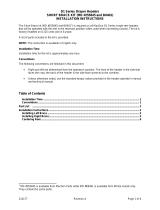 MacDon MD #214177 A D1 Series Installation guide
MacDon MD #214177 A D1 Series Installation guide
-
 MacDon MD #214539 A FM100 front filler retainer kit Installation guide
MacDon MD #214539 A FM100 front filler retainer kit Installation guide
-
 MacDon D50, D60, FD70 Quick Card
MacDon D50, D60, FD70 Quick Card
-
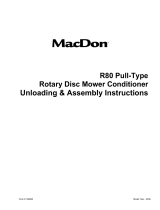 MacDon R80 Unloading & Assembly Instruction
MacDon R80 Unloading & Assembly Instruction
-
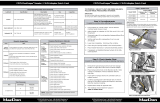 MacDon FD75 Quick Card
MacDon FD75 Quick Card
-
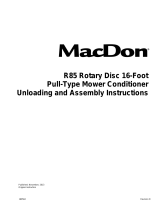 MacDon R85 Unloading & Assembly Instruction
MacDon R85 Unloading & Assembly Instruction
-
 MacDon MD #147877 A FD70 FD75 Installation guide
MacDon MD #147877 A FD70 FD75 Installation guide
-
 MacDon MD #214909 A A40D Installation guide
MacDon MD #214909 A A40D Installation guide
-
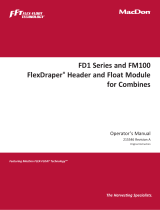 MacDon FD1 FM100 User manual
MacDon FD1 FM100 User manual
-
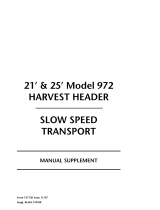 MacDon Transport 21-25 ft 972 User manual
MacDon Transport 21-25 ft 972 User manual
Other documents
-
Kyosho MZW444N/W Aluminum Upper Arm Mount User manual
-
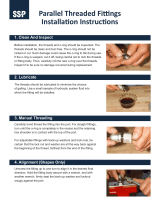 SSP Parallel Threaded Fittings Installation guide
SSP Parallel Threaded Fittings Installation guide
-
WEG W22 - Three-phase Motor Exploded View Quick start guide
-
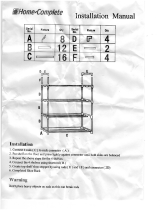 Home-Complete SYNCHKG081321 Installation guide
Home-Complete SYNCHKG081321 Installation guide
-
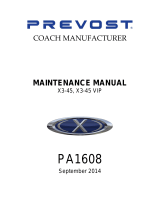 PREVOST X3-45 Owner's manual
PREVOST X3-45 Owner's manual
-
 Great Day TNB2001B Installation guide
Great Day TNB2001B Installation guide
-
Kolpin 98005 User manual
-
KFI Products 100795 Operating instructions
-
Ops-Core Rail Adapter Operating instructions
-
Toro Trimmer Rack, GrandStand Mower Installation guide























































































